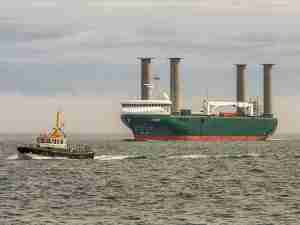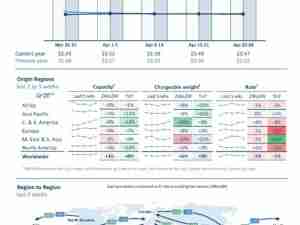Europe is pulling in huge quantities of jet fuel as people get ready to take to the skies in droves this summer.
The region sucked in more than 13 million barrels of jet-type fuel in May, the highest monthly imports since October 2020, according to data from Vortexa Ltd. compiled by Bloomberg. Consumption is forecast to surge this summer amid loosened restrictions following the Omicron wave and pent-up consumer demand.
Europe’s imports plummeted after Covid struck, with travel restrictions causing a massive drop-off in the continent’s air-traffic. Now, they’re ramping back up again in a sign of recovery for the long-suffering aviation sector.
Almost two thirds of Europe’s May imports of jet and kerosene—a very similar material to the aviation fuel—went to the UK and France, with the Netherlands and Spain each claiming about 11%. Kuwait was by far the biggest supplier, accounting for almost 30% of the barrels, followed by the UAE, India and South Korea.
Busy Summer
Western Europe’s jet fuel demand is set to jump by 17% from the end of May to late August, peaking at 1.26 million barrels a day in the latter month, according to BloombergNEF’s weekly demand forecast which is based on flight schedules.
Airlines are optimistic about a busy summer, with EasyJet Plc forecasting 97% of 2019 capacity next quarter.
“We see a pent-up demand for traveling and underlying demand is healthy, both for business and for leisure,” Scandinavian airline SAS AB’s CEO Anko van der Werff wrote at the end of May.
But the picture isn’t all rosy. The UK has been gripped by airport disruption as it begins a long bank-holiday weekend. The travel industry is facing staff shortages, with companies that dismissed workers or lost them to other sectors during the Covid‑19 crisis struggling to make up the gap as bookings rebounded.
High oil prices are another threat, with RyanAir Holdings Plc boss Michael O’Leary recently warning that if they remain strong, there will be fuel surcharges from Europe’s legacy airlines this year.
Europe’s air traffic is still only at about 86% of the 2019 pre-pandemic level for this time of year, according to data from Eurocontrol. In an April forecast, the intergovernmental organization’s base scenario was for that figure to rise to 89% in August, and 92% by the end of the year.








